Cardamom, a highly aromatic spice, is treasured in cuisines worldwide for its complex flavor, blending notes of citrus, mint, and spice. Originating from the Indian subcontinent, this ingredient is a fundamental element in both South Asian and Middle Eastern culinary traditions. Cardamom is available in green, black, and white varieties, each lending a unique essence. It is frequently used in sweet and savory dishes like pastries, puddings, curries, and rice pilafs. Moreover, cardamom is pivotal in spice blends like garam masala and chai tea.
But what if a recipe calls for cardamom and you run out of ground cardamom or cardamom pods? Fear not. In this post, we will share the best cardamom substitutes so you can resume whipping up delicious dishes in your kitchen.
What Is Cardamom
Cardamom, a highly valued spice, is renowned for its distinct cardamom taste, which is a complex fusion of sweet, spicy, and citrusy flavors with floral undertones. Native to South Asia, cardamom is found in small green pods that house black seeds. These seeds can be used either whole or ground into a fine powder. Cardamom is known for its complex flavor, combining a sweet, spicy warmth with citrus and floral notes, making it versatile in savory and sweet dishes alike. It is a crucial ingredient in various spice blends, notably garam masala, and is frequently incorporated into teas, desserts, and curry dishes.
Types Of Cardamom
Green Cardamom (Elettaria Cardamomum)
This is the most common variety, often referred to simply as cardamom. It's known for its sweet, eucalyptus-like aroma and a complex flavor profile that combines notes of lemon, mint, and spice. Green cardamom is used both in sweet and savory dishes, ranging from curries and rice dishes to desserts and beverages.
Black Cardamom (Amomum Subulatum)
Larger than green cardamom, black cardamom has a smoky, earthy aroma from the traditional drying process over open flames. Its flavor is more robust and less sweet than green cardamom, with a coolness akin to mint. Black cardamom is primarily used in savory dishes, such as meat stews and biryanis, and is a common ingredient in garam masala.
The 11 Best Cardamom Substitutes
Cardamom Pods/ Ground Cardamom
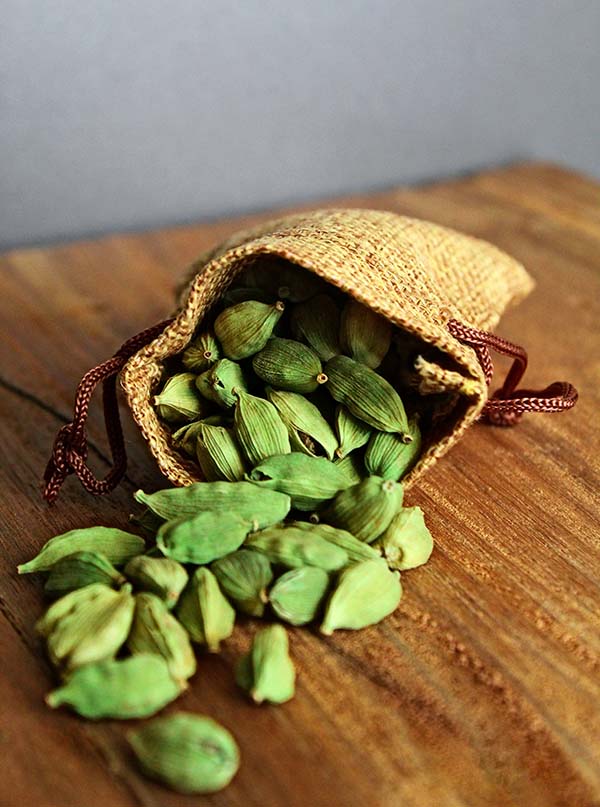
Ground cardamom powder and whole cardamom pods are interchangeable in recipes, each form suited for specific culinary applications. Ground cardamom, being more concentrated and readily available, is an excellent cardamom substitute for cardamom pods.
Typically, one teaspoon of ground cardamom is equivalent to about six pods. This form is ideal for baked goods, spice blends, and dishes where a smooth texture is desired, as it integrates seamlessly without the need to remove pods.
Conversely, cardamom pods are best when fresh flavor and a whole spice aesthetic are preferred. The pods release a burst of flavor when crushed or simmered, perfect for infusions in teas, stews, or rice dishes. Approximately one cardamom pod is equivalent to about 1/6 teaspoon of ground cardamom.
The advantage of using pods as a ground cardamom substitute is the subtlety and depth they bring to dishes, especially in slow-cooked recipes. Whether using ground cardamom or pods depends on the intensity of flavor desired and the nature of the dish being prepared.
Ground Cinnamon And Nutmeg
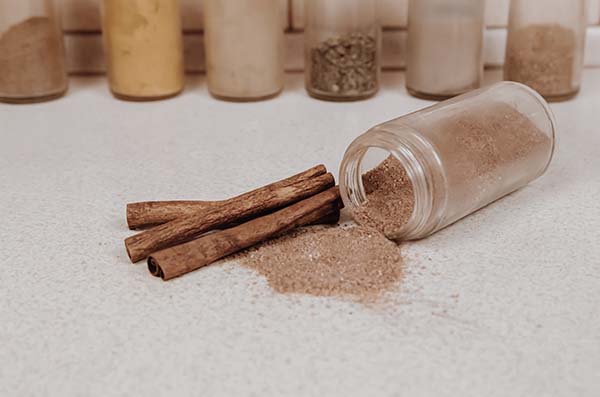
Ground Cinnamon

Nutmeg
Ground cinnamon and nutmeg make an excellent ground cardamom substitute, particularly in sweet dishes where cardamom's warm, aromatic qualities are desired. Cinnamon brings a sweet, woody warmth, while nutmeg adds a subtle nutty and spicy undertone. Together, they create a flavor profile that captures some of cardamom's complex notes.
When using this combination as a substitute for cardamom, mix equal parts cinnamon and nutmeg and use the mixture in the same amount as cardamom called for in the recipe. This combination is especially effective in baked goods such as cakes, cookies, and pastries. It also enhances the flavor of spiced drinks and dessert recipes. It's suitable for savory dishes with a hint of sweetness and warmth.
While cinnamon and nutmeg can mimic the sweetness and spiciness of cardamom, they lack its floral and citrus undertones. This substitution is best in recipes where these specific notes of cardamom are not the central focus but rather its warm and sweet spice qualities.
Allspice
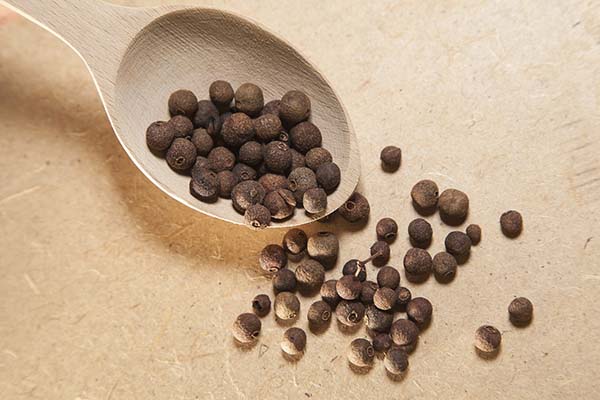
While not identical, allspice offers a similarly warm and aromatic flavor. It's a good cardamom substitute, especially in baking. You can substitute whole allspice berries with whole cardamom and ground allspice with ground cardamom. With its complex blend of flavors reminiscent of cinnamon, nutmeg, and cloves, allspice stands as a robust substitute for cardamom, especially in recipes where a warm, aromatic essence is key. Named for its amalgamation of multiple spice flavors, allspice offers a depth and versatility similar to cardamom's multifaceted profile.
When substituting allspice for cardamom, use it in a one-to-one ratio, but consider the intensity of its flavor, which can be more potent than cardamom's subtle nuances. This alternative is notably successful in baking applications, such as cakes, cookies, and bread. It also proves effective in savory dishes like stews, marinades, and rubs. Allspice brings a rich warmth to dishes, making it a suitable choice for recipes that call for cardamom's spicy and aromatic qualities.
While allspice captures the warmth of cardamom, it lacks the latter's unique floral and citrus notes, so it's best used in recipes where these specific characteristics are not essential but where a warm, spicy presence is desired.
Ginger
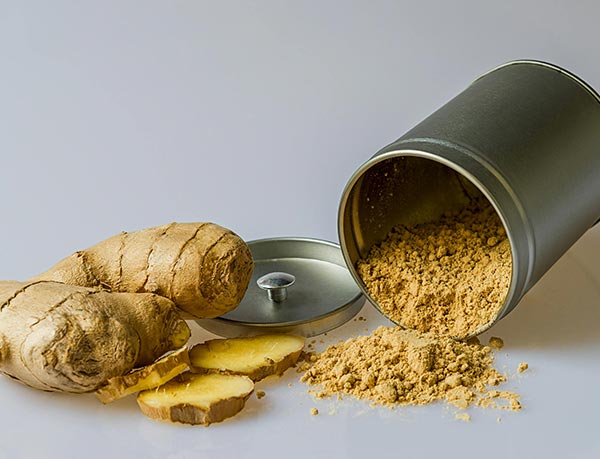
Ground ginger can replace cardamom for its spicy warmth, though it lacks the sweet and floral notes. With its piquant and aromatic profile, Ginger is an excellent substitute for cardamom, especially in dishes with a desired spicy warmth. While ginger lacks the sweet, floral notes of cardamom, it compensates with its own distinctive fiery and slightly sweet flavor.
When using ginger as a replacement, start with half the amount of cardamom called for in the recipe and adjust according to taste, as ginger can be more potent and direct in its spiciness. This substitution is particularly effective in recipes like curries, stir-fries, and baked goods, where ginger's zesty and sharp characteristics can infuse the dish with a lively, aromatic warmth. It also makes for an excellent addition to teas and beverages, imparting a spicy kick.
Since ginger offers a different flavor spectrum, primarily a robust spiciness without the complex undertones of cardamom, it's best used in recipes where these unique cardamom qualities are not central but where a bold, warming spice is welcome.
Cloves
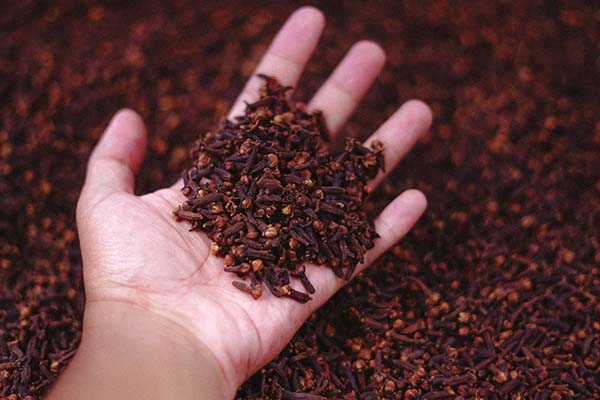
Cloves can be used for their intense aroma and slightly sweet, spicy flavor, similar to one aspect of cardamom's profile. Cloves, with their intense aroma and warm, slightly sweet flavor, can be a compelling substitute for cardamom in many recipes. Although cloves lack the citrusy and floral notes of cardamom, they share a similar pungent warmth, making them a suitable alternative, especially in spice-heavy dishes.
When using cloves as a cardamom substitute, it's crucial to use them sparingly due to their strong flavor. Begin with approximately half of the quantity of cardamom mentioned in the recipe, then adjust according to your taste preferences. Cloves work well in spice blends, baked goods, and savory dishes like stews and braised meats, where their bold and aromatic nature can stand in for the complexity of cardamom. They're also a popular choice in spiced beverages and desserts.
Given cloves' potent nature, they're best used in recipes where a deep, warming spice is desired, and cardamom's unique floral and citrus subtleties are not essential to the dish's overall flavor profile.
Cinnamon And Cloves
Combining these two can somewhat mimic cardamom's complex flavor. It is suitable for use in both sweet and savory dishes. A blend of ground cinnamon and cloves can effectively substitute cardamom, offering a combination of warm, sweet, and spicy flavors. While this blend doesn't replicate cardamom's citrus notes, it provides a similar depth and aromatic warmth. Cinnamon adds sweetness and a woody note, while cloves bring a potent, spicy kick.
When using this mixture as a cardamom substitute, start with equal parts of ground cinnamon and cloves, but use about half the total amount of cardamom called for in the recipe. This is due to the stronger flavors of cinnamon and cloves. This replacement is effective in baked goods such as cakes, cookies, and bread. It also works well in savory dishes like stews and curries, particularly when a rich and aromatic spice blend is desired.
However, the flavor profile will be more pronounced and lack the subtle floral and anise-like notes of cardamom. It's ideal in recipes where the combined warmth and spice of cinnamon and cloves can complement the other ingredients and create a similar aromatic depth.
Fennel Seeds
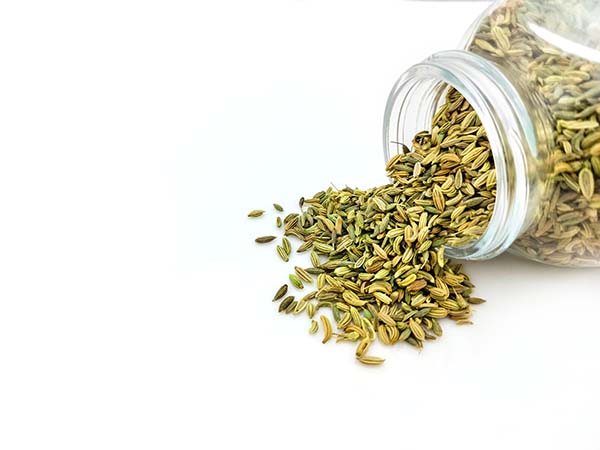
Fennel seeds have a slightly sweet and anise-like flavor, which can approximate one dimension of cardamom's taste, especially in savory dishes. Fennel seeds are a superb substitute for cardamom, particularly in recipes that benefit from a sweet, aromatic flavor with a hint of anise. Fennel seeds share a similar licorice-like taste to cardamom, though they possess a more subdued sweetness and a slight earthiness.
When substituting fennel seeds for cardamom, use them in a roughly equal ratio, but consider the desired flavor intensity, as fennel can be milder. These seeds are especially effective in dishes like sausages, bread, and sauces, where their sweet, herbaceous profile can mimic cardamom's aromatic qualities. Fennel seeds are also a great addition to tea and spice blends, offering a subtle complexity. For the best flavor, lightly toast the seeds to release their aromatic oils before grinding or adding them whole to dishes.
However, since fennel seeds lack some of cardamom's citrus and floral undertones, they're best used in recipes where these specific notes are not crucial but where a similar sweet and aromatic character is desired.
Coriander Pods
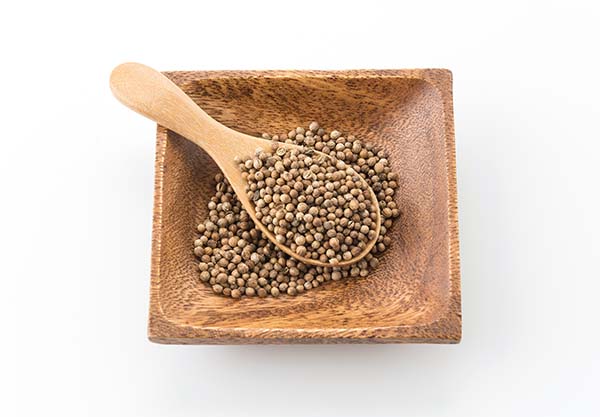
Image by topntp26 on Freepik
Coriander seeds are a feasible cardamom substitute for black or green cardamom pods, particularly in recipes requiring a fragrant, slightly citrusy, warm flavor. While coriander doesn't replicate the intense minty and eucalyptus notes of cardamom, it offers a pleasant, sweet, and floral taste with a hint of lemon, making it a versatile stand-in.
When using coriander seeds as a cardamom substitute, use them in a one-to-one ratio for cardamom pods, adjusting to personal taste preference. These seeds are especially effective in savory dishes like curries, soups, and stews, where they can impart subtle depth and complexity. They also work well in spice rubs and blends. For an enhanced aroma and flavor, lightly toast the coriander seeds before grinding or adding them whole to the dish.
However, as coriander seeds lack some of cardamom's unique flavors, they are best used in recipes where their sweet and earthy characteristics complement the overall taste profile rather than those relying heavily on cardamom's distinctive flavor.
Ground Cloves And Nutmeg Powder
A combination of ground cloves and nutmeg powder is an excellent substitute for cardamom, particularly in recipes that benefit from a rich and aromatic spice profile. Ground cloves bring a deep, warming spice, while nutmeg offers a sweet, nutty, and slightly woody flavor. Together, they create a complex and layered taste that, while not identical, can mimic some of the cardamom's warm, sweet, and spicy characteristics.
When using this blend as a substitute for cardamom, start with equal parts ground cloves and nutmeg, but use about half the amount you would use for cardamom, as these spices are more potent. This cardamom substitute is ideal for baking – in cakes, cookies, and bread – and in savory dishes like stews and curries where a rich, aromatic warmth is desired.
It's important to remember that while this combination can replicate the warmth of cardamom, it lacks its unique floral and citrus notes. Therefore, it's best used in dishes where these specific cardamom characteristics are not essential, but it's spicy, sweet depth is welcomed.
Cinnamon And Ginger

Combining cinnamon and ginger makes an excellent substitute for cardamom because they both offer warm, spicy, and subtly sweet flavors that closely resemble the multifaceted taste of cardamom.
A mixture of equal parts ground cinnamon and ginger is recommended for those looking to replicate cardamom's flavor in recipes. Begin by using this blend at half the quantity of cardamom the recipe demands, and adjust according to taste preferences. This substitution strategy shines in applications such as baking, spice mixes, and the preparation of masala chai.
The advantages of using cinnamon and ginger include their common availability and potential health benefits, like aiding digestion and offering anti-inflammatory effects. However, it's important to note that while this mix can closely approximate cardamom's flavor, it doesn't perfectly mimic it, especially since it lacks cardamom's unique floral undertones.
Pumpkin Spice

Pumpkin spice stands out as a superb alternative to cardamom thanks to its composition of cinnamon, nutmeg, ginger, and cloves, creating a warm, aromatic, and subtly sweet flavor akin to cardamom.
When substituting cardamom with pumpkin spice in various recipes, it's advisable to use an equal amount of pumpkin spice to the cardamom initially required, fine-tuning the quantity based on personal preference. This substitution is particularly effective in enhancing the flavors of baked goods (cookies, brownies), coffees, and dishes that embody the essence of autumn.
One of the advantages of using pumpkin spice is its ability to add a festive and seasonal flair to culinary creations, coupled with its widespread availability during the fall and winter months. However, a potential downside is its complex blend of spices, which might deviate from the singular taste of cardamom and possibly alter the original flavor profile of some dishes.

